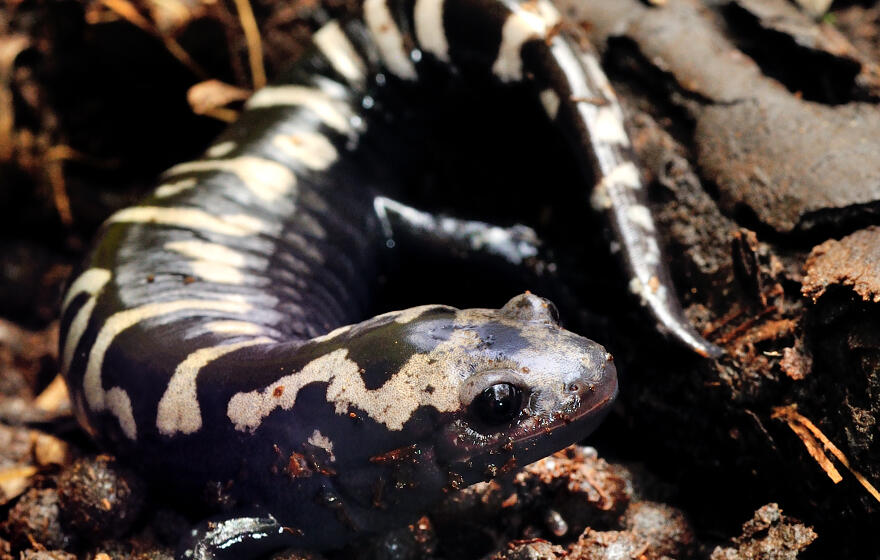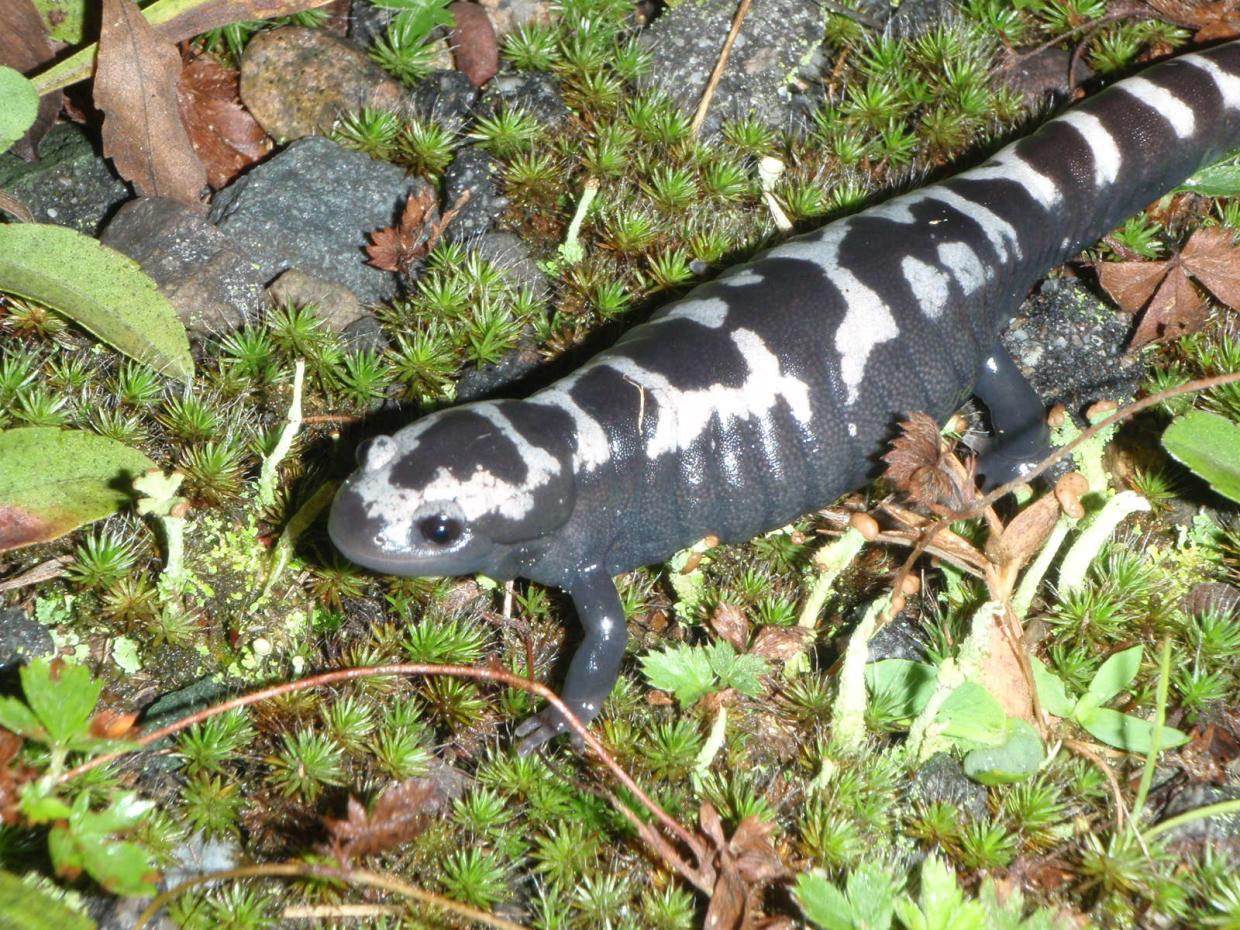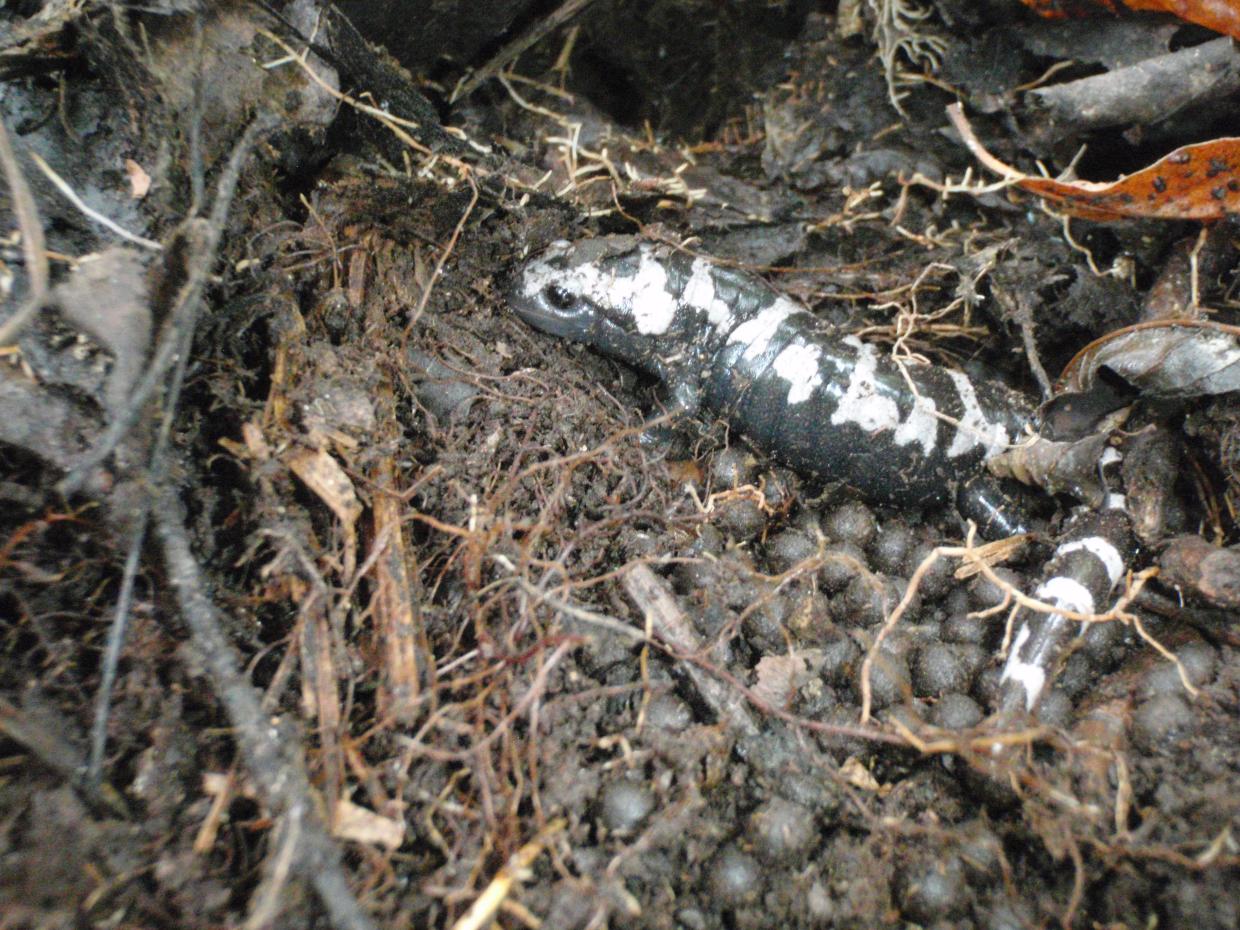- Division of Fisheries and Wildlife
Media Contact for Marbled salamander breeding season
Marion Larson, MassWildlife

September is the peak breeding period in Massachusetts for one of its most attractive yet unorthodox amphibian species, the Marbled Salamander (Ambystoma opacum). During rainy, foggy, or very humid nights, adults emerge from underground burrows in the forest and migrate overland to swamps and vernal pools to breed and deposit eggs. Unlike vernal pool amphibians that breed in the spring and deposit their eggs in water, Marbled Salamanders seek out dried portions of wetlands in late summer and deposit their eggs in depressions beneath logs, grasses, or leaves that will eventually become inundated by fall and winter rains. Once submerged, tiny salamander larvae hatch from the eggs and begin their aquatic life stage; surviving individuals remain in the wetland during the winter, accelerate their growth during April and May, and metamorphose into terrestrial juvenile salamanders by mid-June.
During their breeding migrations in late summer, adult Marbled Salamanders often must pass through residential areas to reach their wetland destinations. The journey from forest to wetland is a risky one that requires crossings of roads, driveways, and yards. Where obstacles such as curbs, storm drains, buildings, fences, stone walls, or inquisitive pets must be navigated, the mission is not always completed in a single night. In those cases, salamanders seek temporary cover beneath just about any object that provides a shield from the rising sun and a refuge from every amphibian’s greatest fear – drying out. Unfortunately, some salamanders make a grave mistake, and the mission is terminated permanently. Whether by actively seeking water or by falling accidentally, some Marbled Salamanders meet their demise each year by entering in-ground swimming pools.
Marbled Salamander is state-listed as Threatened in Massachusetts. Most local populations appear to be small and isolated, and adult survivorship is very important to maintaining them. Residents of towns where the species occurs (see documented towns in our Rare Species Viewer) are encouraged to consider implementing safeguards to prevent salamanders from dying in swimming pools. Perhaps the best and most effective action is to cover pools at night. Another option is to install a barricade around the perimeter of the pool, such as a 12”-high fence made of a firm material (e.g., aluminum flashing, plastic mesh). If using a fence, be sure to insert the bottom at least several inches into the ground to prevent salamanders from squeezing beneath, and if using a mesh material, be sure the mesh size is ¼” or less to prevent salamanders from passing through or getting stuck in the mesh. A third possible practice is to avoid use of chemicals in the pool during periods it will not be used. Lastly, equipping a pool with small “exit ramps” (e.g., FrogLog®) may enable some salamanders to find their way out before drowning or succumbing to chemicals.
In considering the most critical times to safeguard pools, peak migrations of Marbled Salamanders to wetlands occur sometime during the last week of August through the first 2 weeks of September. Migrations back to the forest are less synchronous, wherein smaller movements of salamanders tend to draw out over the course of mid-September through October.
If you happen to encounter a Marbled Salamander, please take a clear photo of the animal, note your precise location, and report your observation to MassWildlife’s Natural Heritage and Endangered Species Program! Valid reports from the public are a key tool used in planning conservation actions for this fascinating and threatened species of Massachusetts. To learn more about its distribution, habitat requirements, and natural history in the Commonwealth, please see our fact sheet.
Marbled salamanders, like this pregnant female found at an Attleboro tennis court, often must cross through yards while migrating to their breeding sites during late summer nights.
A female marbled salamander guarding her clutch of eggs within a dry portion of a Mendon swamp.


